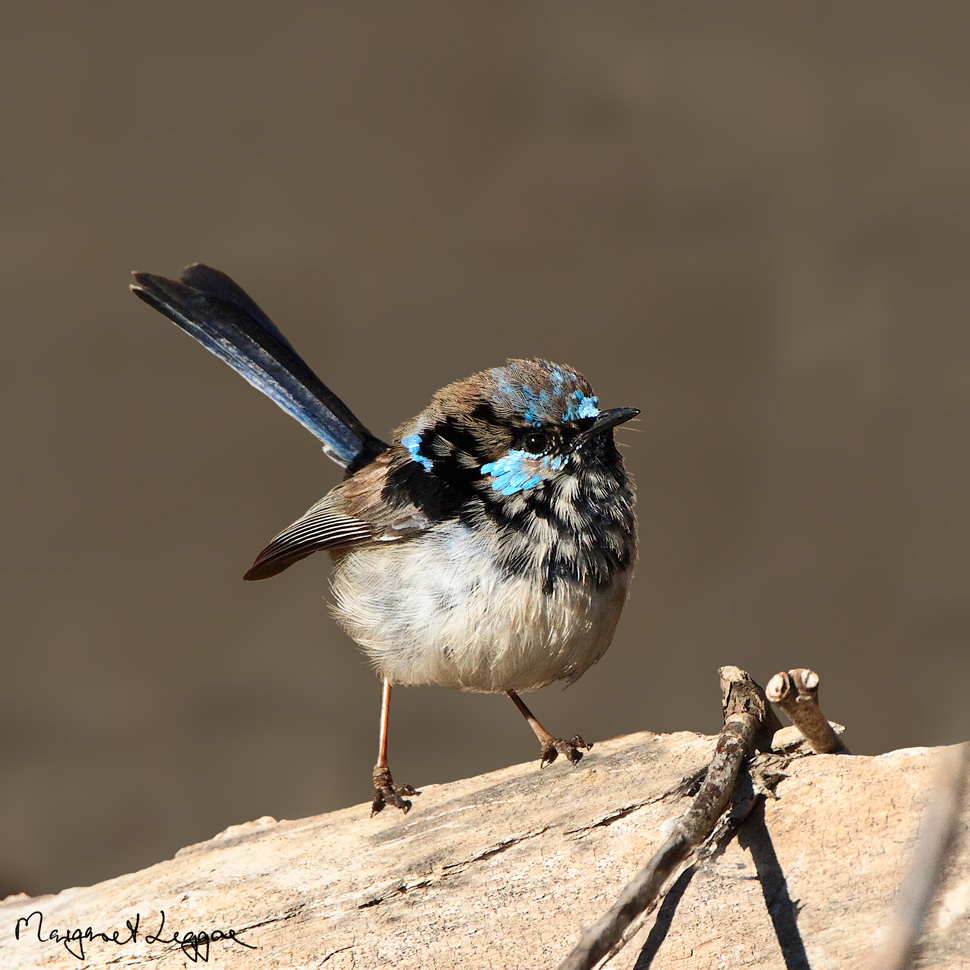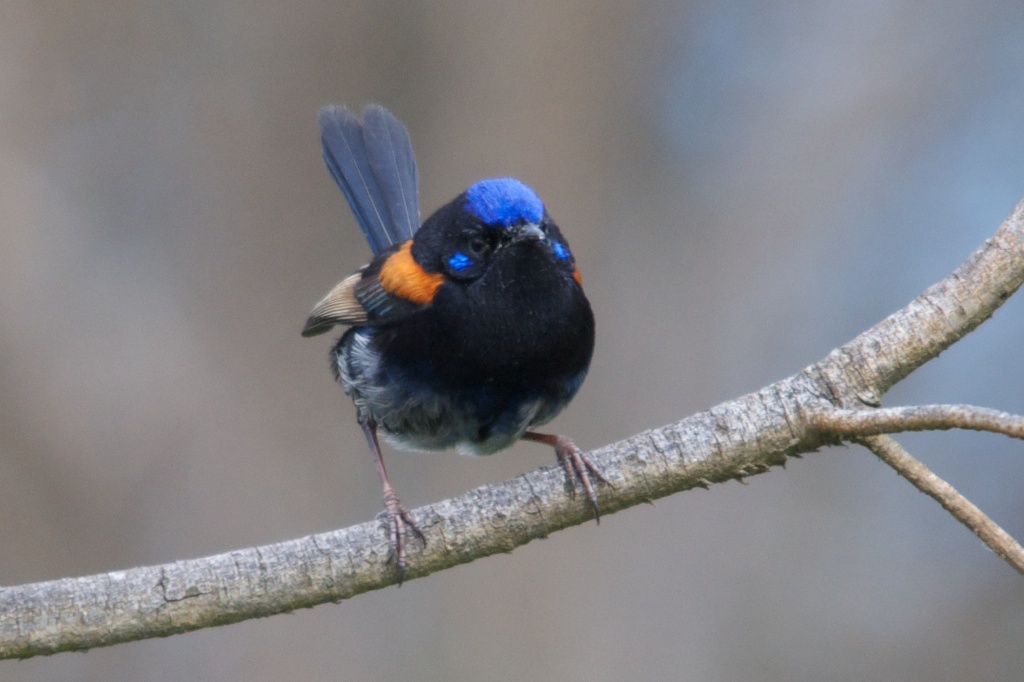
Sipodotus wallacii
TAXONOMY
Sipodotus wallacii G. R. Gray, 1862, Misool Island. Two subspecies.
OTHER COMMON NAMES
English: Wallace’s fairy-wren; French: Mйrion de Wallace;
German: Rostnacken-Staffelschwanz; Spanish: Ratona Australiana
de Wallace.
PHYSICAL CHARACTERISTICS
Female 0.23–0.28 oz (6.5–8 g), male 0.25–0.30 oz (7.0–8.5 g).
Sexes similar in plumage. Long-billed, short-tailed fairy-wren,
white below with white-streaked black cap and russet back.
DISTRIBUTION
Resident, lowland rainforests of New Guinea, sometimes to
more than 3,280 ft (1,000 m) elevation. S. w. wallacii in north,
W. s. coronatus in center and south.
HABITAT
Uses trees more than undergrowth in rainforest; in canopy to
130 ft (40 m); frequents tangles of vines and climbing bamboo
at forest edge.
BEHAVIOR
Strong, undulating flight between trees. Found in family
groups and in mixed species foraging flocks. Social organization
poorly known. Does not cock its tail. Song is a series of
high-pitched twittering notes.
FEEDING ECOLOGY AND DIET
Forages for insects by gleaning, probing, and hang-gleaning,
mostly in foliage. Also hawks flying insects.
REPRODUCTIVE BIOLOGY
Domed nest suspended from vines 16.5–33 ft (5–10 m) from
the ground. May have helpers, but little is known of reproductive
biology.
CONSERVATION STATUS
Not threatened but deforestation a potential threat.
SIGNIFICANCE TO HUMANS
None known.
Other popular Animals
Photo Gallery of - Wallace’s wren




 Animalia Life
Animalia Life